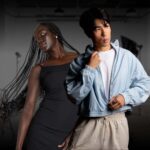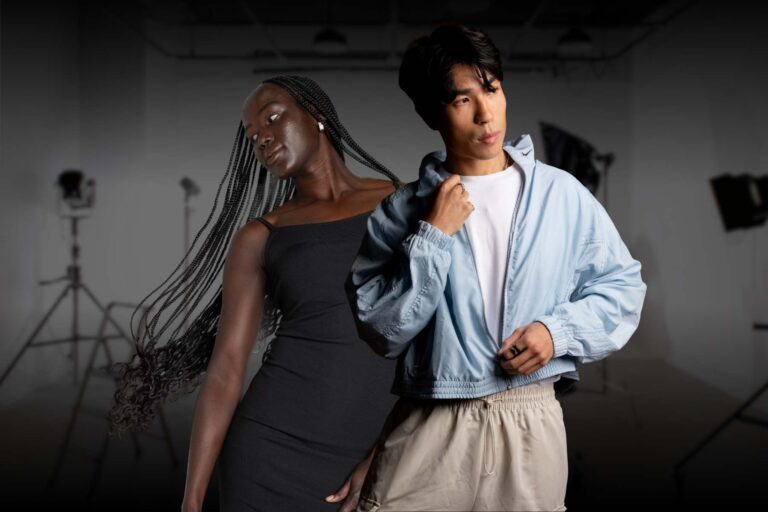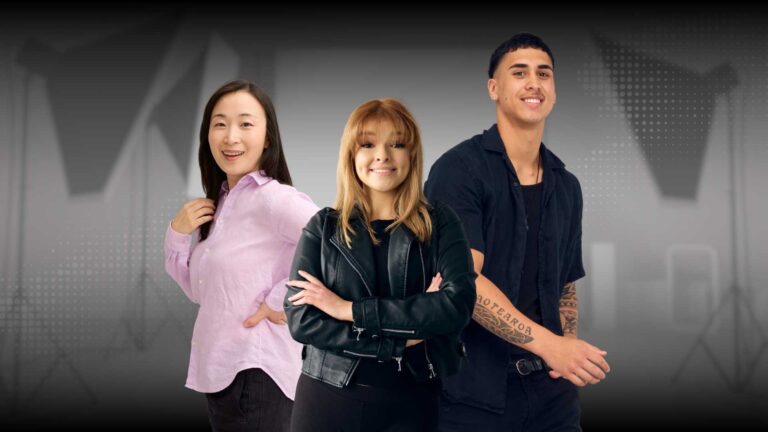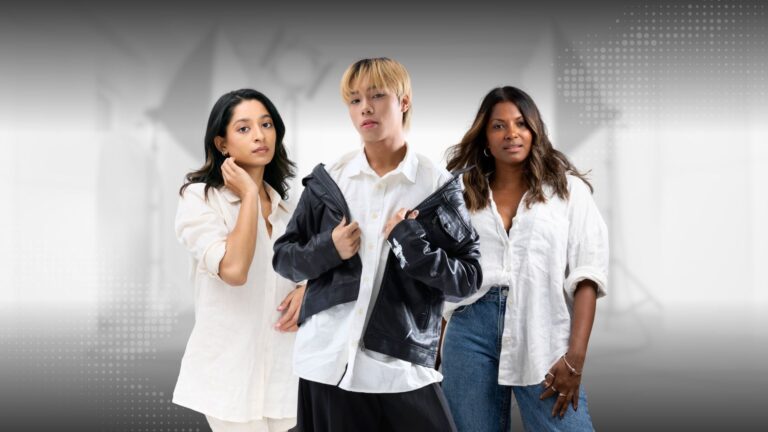Contents
The fashion and modelling industry has undergone a revolutionary transformation in recent years, with plus-sized models leading the charge toward greater inclusivity and authentic representation. What was once considered a niche market has evolved into a powerful force that’s reshaping beauty standards, challenging traditional fashion norms, and creating unprecedented opportunities for models of all sizes.
Plus-sized models are no longer confined to specialised catalogues or limited campaign types. Today’s industry recognises the economic power and cultural influence of diverse body types, leading to increased demand for plus-sized models across high fashion, commercial advertising, runway shows, and digital campaigns.
This shift represents not just a trend but a fundamental change in how the fashion industry understands and serves its diverse consumer base. The rise of body positivity movements, changing consumer expectations, and the proven commercial success of inclusive campaigns have created a landscape where plus-sized models can build thriving, diverse careers.
From walking runways at major fashion weeks to starring in international advertising campaigns, plus-sized models are breaking barriers and redefining what it means to be successful in the modelling industry.
→ The Evolution of Plus-Sized Modelling
→ Understanding the Plus-Sized Modelling Market
→ Essential Requirements and Characteristics
→ Building a Successful Career as a Plus-Sized Model
→ Overcoming Challenges and Industry Barriers
→ The Evolution of Plus-Sized Modelling
→ Understanding the Plus-Sized Modelling Market
→ Essential Requirements and Characteristics
→ Building a Successful Career as a Plus-Sized Model
→ Overcoming Challenges and Industry Barriers
The Evolution of Plus-Sized Modelling
The journey of plus-sized models from industry outsiders to mainstream success stories reflects broader cultural shifts toward body acceptance and inclusive representation. Understanding this evolution provides context for the current opportunities and continued growth potential in this sector.
Historical Context and Industry Change
For decades, the fashion industry maintained rigid size standards that excluded the majority of women from representation in mainstream media. Plus-sized models were relegated to specialty catalogues and limited campaign types, with few opportunities for high-profile work or career advancement.
The turning point came as consumers began demanding authentic representation that reflected their own experiences and body types. Social media platforms amplified these voices, allowing plus-sized models to build followings and demonstrate their commercial appeal directly to brands and agencies.
Major fashion brands began recognising the disconnect between their marketing imagery and their actual customer base. Studies consistently showed that the average woman wears size 14-16, yet mainstream fashion advertising featured almost exclusively smaller sizes. This realisation sparked the initial industry shift toward greater size inclusivity.

Breakthrough Moments and Industry Milestones
Several landmark moments have defined the mainstream acceptance of plus-sized models. Ashley Graham’s Sports Illustrated Swimsuit Issue cover in 2016 marked a watershed moment, demonstrating that plus-sized models could achieve the same high-profile recognition as their straight-size counterparts.
The inclusion of plus-sized models in major fashion weeks, from New York to Paris, signalled industry-wide acceptance of diverse body types on the world’s most prestigious runways. Brands like Savage X Fenty, Chromat, and Christian Siriano led the charge in featuring diverse body types prominently in their shows.
Major fashion magazines began featuring plus-sized models on covers and in editorial spreads, moving beyond tokenism to genuine integration. Vogue, Harper’s Bazaar, and Elle began regularly featuring plus-sized models in high-fashion contexts, normalising diverse representation in luxury fashion media.
Commercial Success and Market Validation
The commercial success of campaigns featuring plus-sized models provided concrete evidence of their market appeal. Brands reported increased engagement, sales, and brand loyalty when featuring diverse body types in their marketing materials.
Plus-size fashion became a multi-billion-dollar market segment, with dedicated brands and major retailers expanding their plus-size offerings significantly. This market growth created increased demand for plus-sized models to represent these expanding product lines authentically.
Consumer research consistently demonstrated that inclusive advertising resonated more strongly with all demographics, not just plus-size consumers. This broad appeal validated the business case for featuring plus-sized models across various campaign types and target markets.
Understanding the PLus-Sized Modelling Market
The plus-sized modelling market encompasses diverse opportunities across multiple industry sectors, each with unique requirements, expectations, and career pathways. Understanding these different segments helps aspiring plus-sized models identify the best opportunities for their specific goals and attributes.
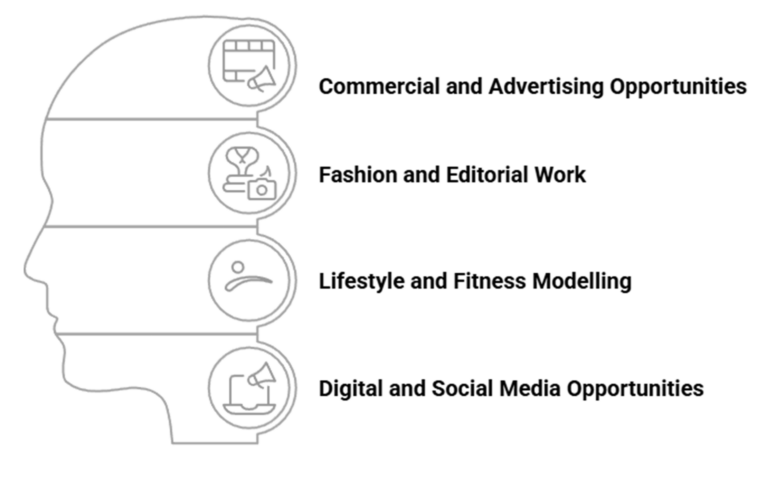
Commercial and Advertising Opportunities
Commercial modelling represents one of the largest opportunity areas for plus-sized models, with brands across industries seeking authentic representation for their diverse customer bases. Retail brands, lifestyle companies, and service providers regularly feature plus-sized models in advertising campaigns targeting broad consumer demographics.
The beauty and wellness industry has become particularly active in featuring plus-sized models, recognising that their products serve consumers of all sizes. Makeup brands, skincare companies, and wellness services use plus-sized models to demonstrate inclusivity and authentic product usage across diverse body types.
Technology and service companies increasingly feature plus-sized models in their advertising to reflect their diverse user bases. From fitness apps to financial services, brands recognise that featuring diverse body types in their marketing materials creates stronger connections with their actual customer demographics.
Lifestyle and Fitness Modelling
The health and wellness industry’s evolution toward body positivity has created significant opportunities for plus-sized models in fitness and lifestyle campaigns. Activewear brands, fitness equipment companies, and wellness services feature plus-sized models to promote inclusive approaches to health and fitness.
Athletic brands have recognised that their customer bases include people of all sizes who are active and engaged in fitness activities. This realisation has led to increased representation of plus-sized models in sports and athletic wear campaigns.
Lifestyle brands across categories use plus-sized models to represent authentic experiences and relatable scenarios. From home goods to travel companies, brands recognise that their customers come in all sizes and want to see themselves represented in marketing materials.
Fashion and Editorial Work
High fashion and editorial opportunities for plus-sized models have expanded dramatically, with major fashion magazines regularly featuring diverse body types in editorial spreads. These opportunities range from beauty editorials to high-fashion concept shoots that showcase plus-sized models in luxury fashion contexts.
Designer collaborations have become increasingly common, with plus-sized models serving as muses and collaborators for fashion designers creating inclusive collections. These partnerships often extend beyond single campaigns to ongoing brand relationships and creative collaborations.
Fashion week opportunities continue to expand, with more designers including plus-sized models in their runway shows. These high-profile opportunities provide career-defining exposure and establish models’ credibility within the high-fashion segment of the industry.
Digital and Social Media Opportunities
Social media platforms have created new opportunities for plus-sized models to build personal brands and connect directly with audiences and potential clients. Instagram, TikTok, and other platforms allow models to showcase their personalities, lifestyles, and professional work while building engaged followings.
Influencer marketing has become a significant income stream for plus-sized models with substantial social media followings. Brands collaborate with plus-sized influencers and models to reach engaged audiences while promoting body positivity and inclusive messaging.
E-commerce brands frequently work with plus-sized models for product photography, lifestyle imagery, and social media content. The growth of online retail has created consistent demand for diverse models to represent products authentically across digital platforms.
Essential Requirements and Characteristics
Success as a plus-sized model requires understanding the specific requirements and characteristics that agencies and clients seek. While the industry has become more inclusive, professional standards and expectations remain high across all size categories.

Size Parameters and Industry Standards
Plus-sized modelling typically encompasses sizes 12 and above, though specific requirements vary by agency and client. Most agencies define plus-size modelling as beginning at size 12-14, with opportunities available across the full size spectrum above this range.
Different market segments may have varying size requirements, with some commercial clients seeking specific size ranges for particular campaigns. Understanding these nuances helps models position themselves appropriately for different types of opportunities.
Health and fitness are emphasised across all modelling categories, including plus size. Agencies and clients expect plus-sized models to maintain healthy lifestyles and professional fitness levels, regardless of their size category.

Professional Skills and Attributes
Confidence and comfort with one’s body are essential characteristics for plus-sized models. The ability to move naturally and confidently in front of cameras and on runways translates directly to successful bookings and client satisfaction.
Versatility in posing, expression, and style adaptation remains crucial for plus-sized models. Clients expect the same level of professional skill and adaptability from plus-sized models as they do from models in any other category.
Strong communication skills and professional demeanour are particularly important for plus-sized models, who often serve as ambassadors for body positivity and inclusive messaging in their professional work.
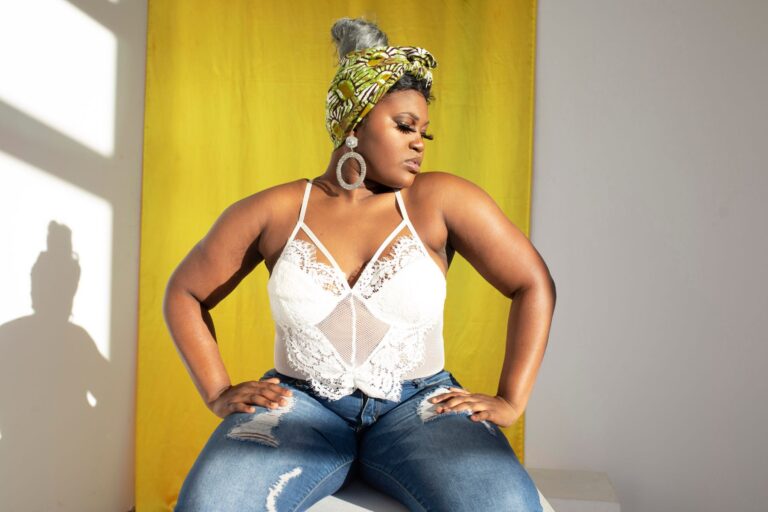
Portfolio Development and Presentation
Plus-sized models need diverse portfolios that showcase their range across different style categories and campaign types. Strong portfolios include commercial shots, fashion imagery, lifestyle photos, and beauty work that demonstrates versatility and professional capability.
Working with photographers who understand plus-size modelling and can create flattering, powerful imagery is crucial for portfolio development. Many successful plus-sized models invest in working with photographers who specialise in or have extensive experience with diverse body types.
Portfolio presentation should emphasise the model’s unique strengths and personality while demonstrating professional capability across various modelling scenarios. Strong portfolios tell a story about the model’s brand and capabilities while showcasing technical modelling skills.
Building a Successful Career as a Plus-Sized Model
Creating a sustainable and successful career as a plus-sized model requires strategic planning, professional development, and understanding of the unique opportunities and challenges within this market segment.

Agency Representation and Industry Navigation
Finding appropriate agency representation is crucial for plus-sized models seeking to build professional careers. Many agencies now have dedicated plus-size divisions or specialise specifically in representing diverse body types across the size spectrum.
Research agencies carefully understand their client bases, success with plus-sized models, and approach to representing diverse talent. The best agencies for plus-sized models have strong relationships with clients who regularly book diverse body types and understand the plus-size market.
Some plus-sized models work with multiple agencies or combine agency representation with direct client relationships, particularly in the digital and social media space. This hybrid approach can provide diverse income streams and career opportunities.

Developing Your Personal Brand
Personal branding is particularly important for plus-sized models, who often serve as representatives for body positivity and inclusive messaging. Developing a clear, authentic personal brand helps differentiate models in a competitive market while attracting appropriate opportunities.
Consider what unique perspective, personality traits, or expertise you bring to your modelling career beyond your physical attributes. Many successful plus-sized models build brands around lifestyle, wellness, fashion expertise, or advocacy work that enhances their modelling careers.
Social media presence often plays a significant role in plus-sized models’ careers, serving as both a portfolio platform and a way to connect with potential clients and collaborators. Develop social media strategies that align with your career goals while showcasing your personality and professional work.
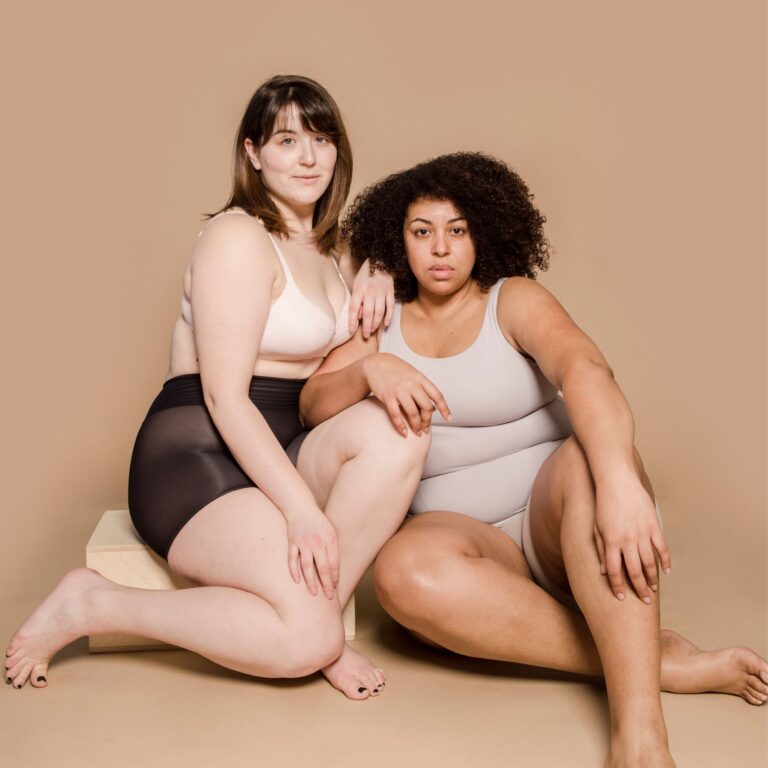
Networking and Industry Relationships
Building relationships within the fashion and modelling industry is crucial for career development. Attend industry events, fashion shows, and networking gatherings to connect with photographers, stylists, designers, and other models.
The plus-size modelling community is often particularly supportive and collaborative, with established models mentoring newcomers and sharing opportunities. Engage authentically with this community while building professional relationships that can support your career growth.
Work to build relationships with photographers, makeup artists, stylists, and other creative professionals who understand and celebrate diverse body types. These collaborations often lead to ongoing work relationships and referral opportunities.

Skill Development and Professional Growth
Invest in developing your modelling skills through workshops, classes, and practice sessions. While the industry has become more inclusive, professional standards remain high, and strong technical skills are essential for success.
Consider developing complementary skills that can enhance your modelling career, such as social media management, styling, or advocacy work. Many plus-sized models build multi-faceted careers that combine modelling with other creative or business pursuits.
Stay informed about industry trends, body positivity movements, and changes in fashion and advertising that might create new opportunities. The plus-size modelling market continues to evolve rapidly, and staying current helps identify emerging opportunities.
Overcoming Challenges and Industry Barriers
While opportunities for plus-sized models have expanded significantly, certain challenges and barriers persist within the industry. Understanding and preparing for these challenges helps models navigate their careers more effectively.

Addressing Size Bias and Discrimination
Despite industry progress, size bias and discrimination still exist in some segments of the fashion and modelling world. Plus-sized models may encounter clients, photographers, or industry professionals who hold outdated attitudes about body size and modelling.
Developing resilience and professional strategies for handling discrimination is important for career longevity. This might include working with supportive teams, advocating for professional treatment, and focusing on clients and collaborators who value diversity and inclusion.
Many plus-sized models find strength in community support and mentorship from other models who have navigated similar challenges. Building networks of support within the industry helps maintain motivation and perspective during difficult experiences.
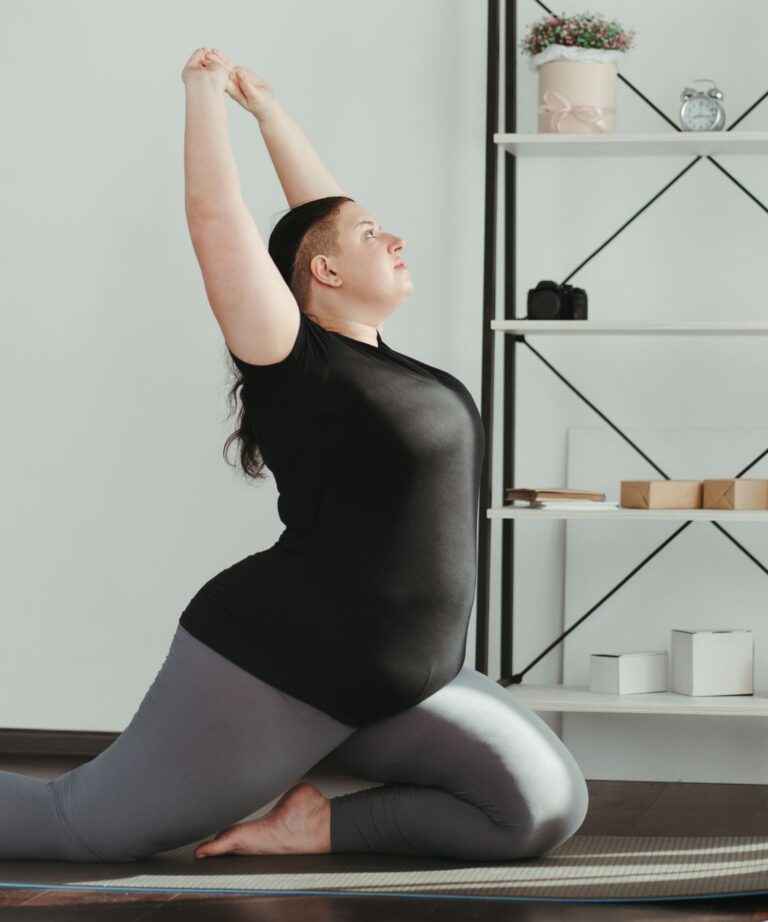
Managing Health and Wellness Expectations
Plus-sized models often face heightened scrutiny regarding their health and fitness, with some industry professionals making inappropriate assumptions or comments about lifestyle choices. Developing strategies for addressing these situations professionally is important for career success.
Focus on maintaining your own health and wellness standards rather than conforming to others’ expectations or assumptions. Work with healthcare professionals who understand your career requirements and support your overall well-being.
Many successful plus-sized models become advocates for health at every size approaches, using their platforms to promote balanced, sustainable wellness practices rather than conforming to narrow beauty standards.

Navigating Limited Opportunities in Some Sectors
While opportunities have expanded significantly, some industry sectors still offer limited opportunities for plus-sized models. High fashion, luxury brands, and certain international markets may have fewer opportunities available.
Rather than viewing these limitations as career barriers, many plus-sized models focus on sectors where opportunities are abundant and growing. Commercial modelling, lifestyle campaigns, and digital content creation often provide more consistent work and better compensation.
Some plus-sized models work to create opportunities in traditionally restrictive sectors by partnering with progressive brands, supporting inclusive designers, or using their influence to advocate for greater representation.
The Business Side of Plus-Sized Modelling
Understanding the business aspects of plus-sized modelling is crucial for building sustainable careers and making informed decisions about opportunities and representation.
Rates and Compensation Standards
Plus-sized models should command the same rates as models in other categories for equivalent work. Any agency or client that offers lower compensation based solely on size is engaging in discriminatory practices that should be avoided.
In some cases, plus-sized models with strong social media followings or specialised expertise may command premium rates due to their additional value as influencers or brand ambassadors. Understanding your unique value proposition helps in rate negotiations.
Commercial work often provides the most consistent and well-compensated opportunities for plus-sized models, with brands willing to pay competitive rates for authentic representation of their diverse customer bases.
Contract Terms and Rights Protection
Pay close attention to image usage rights and contract terms, particularly for campaigns that may become high-profile examples of inclusive advertising. Ensure you’re being compensated appropriately for the scope and duration of image usage.
Some plus-sized models negotiate specific terms related to body positivity messaging and brand alignment, ensuring that their image is used in ways that align with their personal values and professional brand.
Work with experienced agents or legal professionals who understand the modelling industry and can help negotiate fair terms that protect your interests and career goals.
Building Multiple Revenue Streams
Many successful plus-sized models develop diverse income streams that combine traditional modelling work with influencer partnerships, brand collaborations, speaking engagements, and other business ventures.
The expertise and platform that come with successful plus-sized modelling careers often create opportunities in related fields such as styling, brand consulting, body positivity advocacy, or fashion entrepreneurship.
Consider how your modelling career can serve as a foundation for broader business opportunities while maintaining focus on your primary modelling goals and professional development.
Technology and Social Media Impact
The digital revolution has particularly benefited plus-sized models, providing platforms for building audiences, connecting with clients, and demonstrating commercial appeal outside traditional industry gatekeepers.

Social Media as a Career Platform
Instagram, TikTok, and other social media platforms have become essential career tools for plus-sized models, allowing them to showcase their work, build personal brands, and connect directly with potential clients and collaborators.
Successful plus-sized models often use social media strategically, balancing professional content with personal insights and body positivity messaging that resonates with their audiences and attracts brand partnerships.
The ability to demonstrate engagement and influence through social media metrics has become valuable currency in the modelling industry, particularly for plus-sized models working with brands focused on authentic representation.

Influencer Marketing Opportunities
The intersection of modelling and influencer marketing has created significant opportunities for plus-sized models with engaged social media followings. Brands regularly partner with plus-sized influencers for authentic product promotion and brand messaging.
These partnerships often extend beyond single campaigns to ongoing brand relationships that provide steady income and career stability. Many plus-sized models build substantial businesses around influencer partnerships while maintaining traditional modelling careers.
Understanding the business aspects of influencer marketing, including FTC disclosure requirements and rate negotiation, is crucial for plus-sized models pursuing these opportunities.

Digital Content Creation
The growth of e-commerce and digital marketing has created consistent demand for diverse models for website imagery, social media content, and digital advertising campaigns. Plus-sized models with content creation skills can build valuable relationships with brands seeking ongoing digital content.
Many successful plus-sized models develop skills in photography, styling, and content creation that enhance their modelling careers while providing additional income streams and creative outlets.
The ability to create high-quality content independently has become particularly valuable during periods when traditional modelling work may be limited, providing career resilience and flexibility.
International Opportunities and Market Expansion
The body positivity movement and demand for inclusive representation have created international opportunities for plus-sized models, though market acceptance varies by region and cultural context.

Global Market Variations
Different international markets have varying levels of acceptance and demand for plus-sized models. Markets like the United States, United Kingdom, and Australia tend to have more developed plus-size modelling sectors, while other regions may offer fewer opportunities.
Understanding cultural attitudes toward body size and beauty standards in different markets helps plus-sized models make informed decisions about international career opportunities and market expansion.
Some plus-sized models build successful international careers by focusing on markets where body positivity and inclusive representation are valued and commercially successful.

Cross-Cultural Representation
Plus-sized models working internationally often serve as ambassadors for body positivity and inclusive representation, helping to expand acceptance of diverse body types in new markets.
Cultural sensitivity and understanding local market dynamics are crucial for plus-sized models working internationally. What resonates in one market may not translate directly to another cultural context.
Many successful international campaigns featuring plus-sized models focus on universal themes like confidence, authenticity, and self-acceptance that transcend cultural boundaries while respecting local sensitivities.
Future Trends and Industry Evolution
The plus-sized modelling industry continues to evolve rapidly, with new trends, opportunities, and challenges emerging as body positivity movements gain momentum and brands seek authentic representation.
Continued Market Expansion
The plus size fashion market continues to grow globally, creating increased demand for plus-sized models across all campaign types and market segments. This growth trajectory suggests continued expansion of opportunities for models in this category.
Brands are increasingly recognising that inclusive representation appeals to consumers across all demographics, not just plus-size customers. This broad appeal supports continued investment in diverse casting and campaign development.
The normalisation of diverse body types in mainstream media and advertising suggests that plus-sized modelling will continue to integrate more fully into all aspects of the fashion and advertising industries.
Technology Integration and Virtual Modelling
Emerging technologies like virtual reality, augmented reality, and AI are beginning to create new types of modelling opportunities that may particularly benefit plus-sized models by focusing on movement, personality, and authentic representation rather than traditional beauty standards.
Virtual try-on technologies and digital fashion applications require diverse body types for realistic representation, creating technical modelling opportunities that emphasise authentic fit and movement over traditional aesthetic criteria.
The growth of digital fashion and virtual modelling platforms may create new career pathways for plus-sized models interested in technology integration and digital content creation.
Advocacy and Social Impact
Many plus-sized models are expanding their careers to include advocacy work, speaking engagements, and social impact initiatives that leverage their platforms for positive change in beauty standards and body acceptance.
The intersection of modelling careers with social activism and advocacy work creates new professional opportunities while allowing models to contribute to meaningful cultural change around body positivity and representation.
Brands increasingly seek partnerships with plus-sized models who can authentically represent their values around diversity, inclusion, and social responsibility, creating opportunities for models aligned with these missions.
Making Your Mark in Plus-Sized Modelling
Success in plus-sized modelling requires combining professional modelling skills with authenticity, confidence, and strategic career planning. The industry’s continued evolution creates opportunities for models who are prepared to adapt and grow with changing market demands.
Developing Your Unique Value Proposition
Consider what unique combination of skills, personality, and perspective you bring to your modelling career. Successful plus-sized models often combine their modelling work with expertise in fashion, wellness, lifestyle, or advocacy that enhances their professional appeal.
Your personal story and journey with body acceptance may be valuable assets in your modelling career, particularly when working with brands focused on authentic representation and inclusive messaging.
Think about how your modelling career can contribute to positive change in beauty standards and representation while building a sustainable business that supports your personal and professional goals.
Building Professional Resilience
The modelling industry can be challenging for models of all sizes, and developing resilience and coping strategies is crucial for long-term success. Focus on building supportive professional networks and maintaining perspective during both successful and challenging periods.
Celebrate your achievements and contributions to positive change in the industry while maintaining focus on continued professional growth and skill development.
Remember that your success as a plus-sized model contributes to expanding opportunities for other diverse models and helps create a more inclusive industry for future generations.
Conclusion
The landscape for plus-sized models has transformed dramatically, evolving from limited niche opportunities to mainstream acceptance and commercial success across the fashion and advertising industries. This evolution represents not just changing beauty standards, but a fundamental shift toward authentic representation that reflects the diversity of real consumers and celebrates body positivity.
Today’s plus-sized models have unprecedented opportunities to build successful, diverse careers spanning high fashion, commercial advertising, digital content creation, and advocacy work. The continued growth of the plus-size fashion market, combined with consumer demand for authentic representation, suggests that opportunities will continue expanding for models prepared to meet professional standards while bringing their unique perspectives to the industry.
Success in plus-sized modelling requires the same professional skills, dedication, and strategic thinking as modelling in any other category, combined with the confidence and authenticity that make plus-sized models particularly powerful representatives for brands seeking genuine connections with diverse audiences. The most successful plus-sized models combine technical modelling skills with personal branding, social media savvy, and often advocacy work that amplifies their professional impact.
The future of plus-sized modelling looks increasingly bright, with continued market expansion, technology integration, and cultural shifts toward body acceptance creating new opportunities and career pathways. Models entering this field today have the chance to be part of continued positive change while building rewarding careers that celebrate diversity and challenge traditional beauty standards.
Whether you’re just beginning your journey as a plus-sized model or looking to advance your existing career, the current industry landscape offers more opportunities than ever before for models committed to professional excellence and authentic representation. The key to success lies in combining strong modelling skills with strategic career planning, authentic personal branding, and the confidence to break barriers while building the inclusive future of fashion and advertising.
Ready to start your modelling career? Contact Hunter Talent today.


